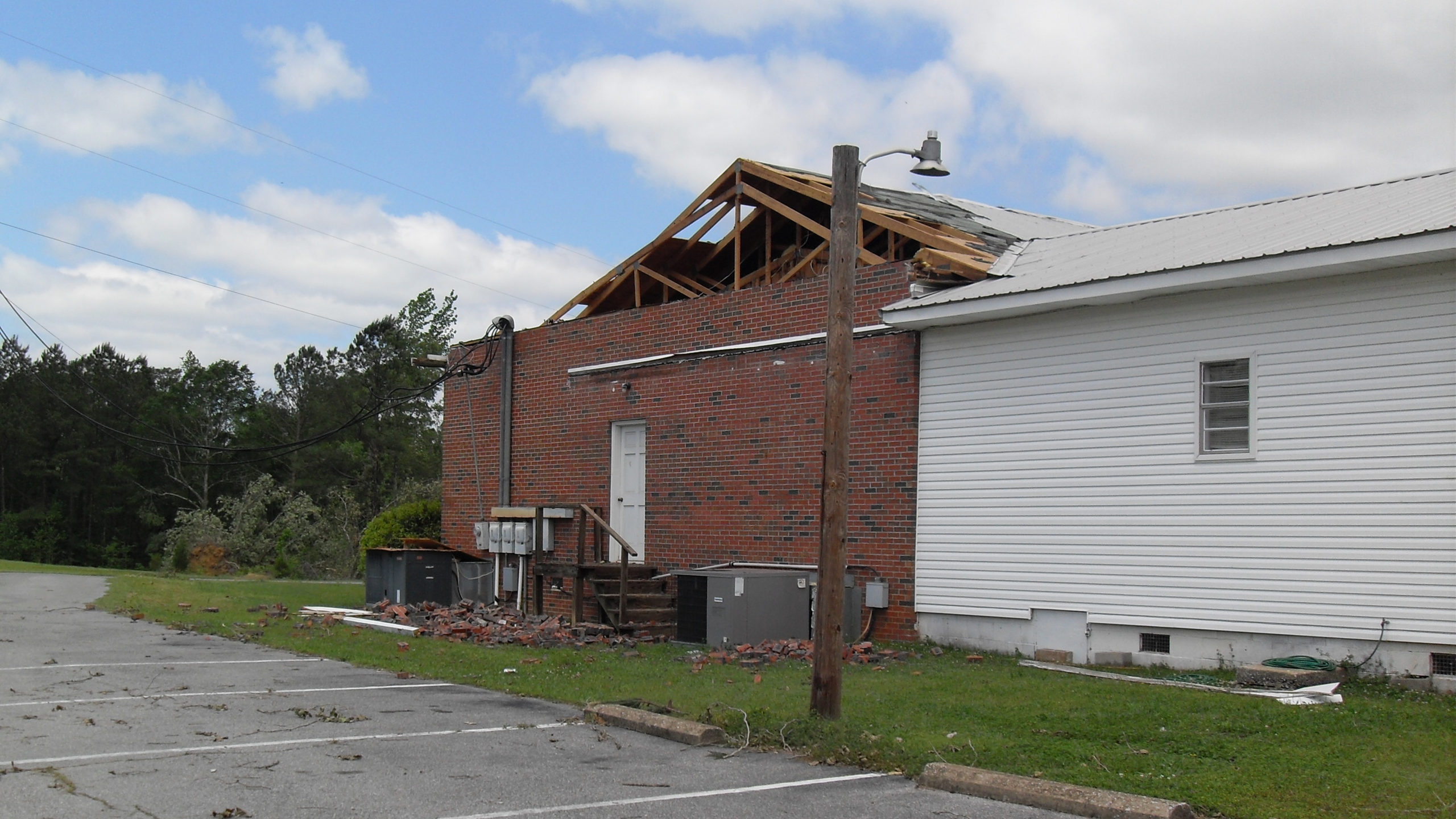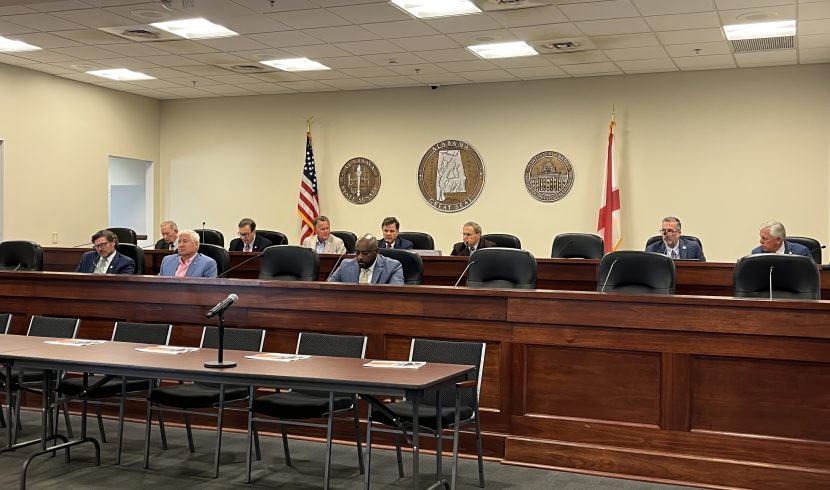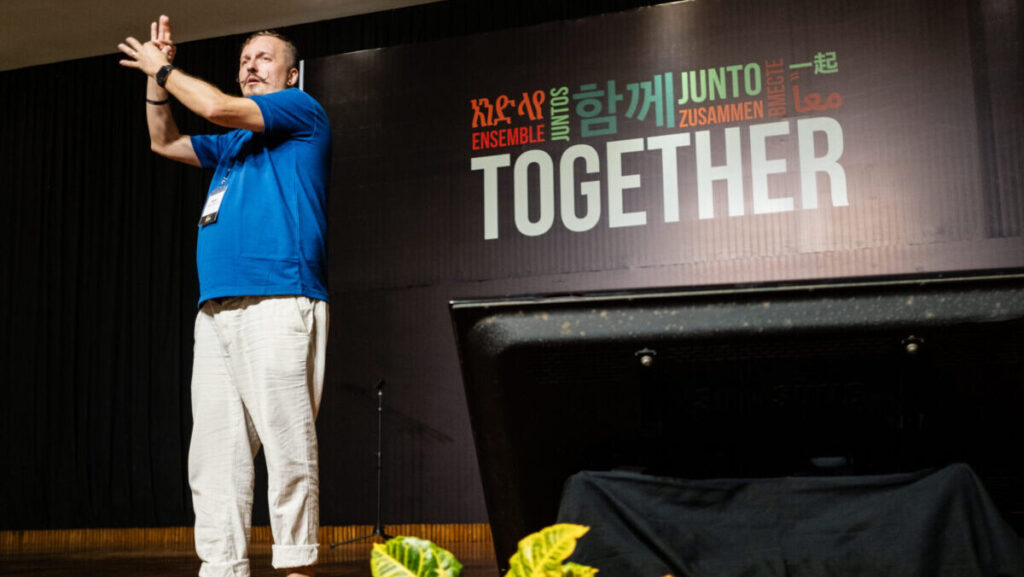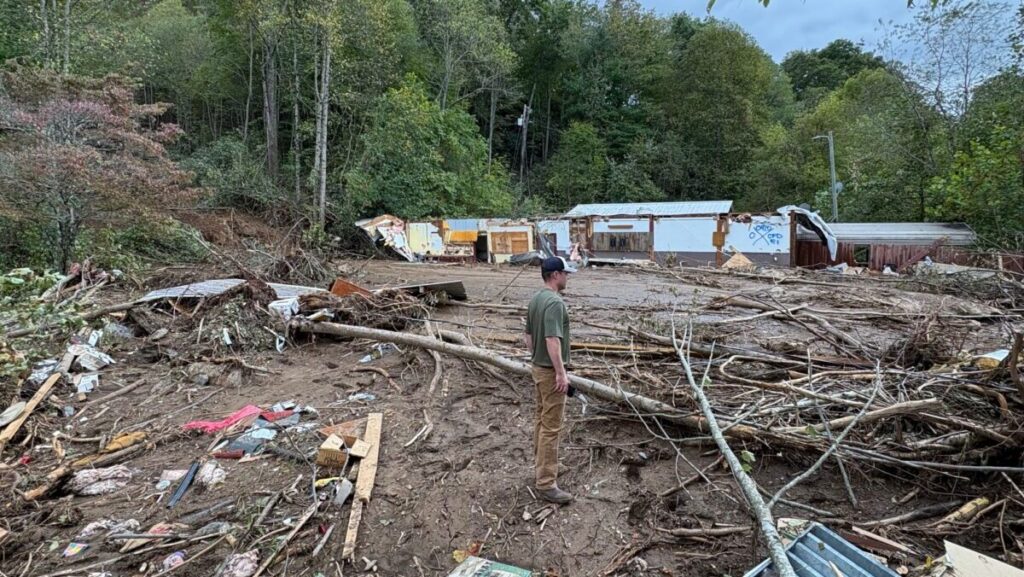For Pastor Tommy Miller, it was like a bad dream that came back around like a boomerang 10 years later.
On April 27, 2011, a “devastating” tornado took the back end off of his church — First Baptist, Wellington — and threw the steeple from the front end across the road.
“Everything in it was destroyed,” Miller said.
But the church built back.
Before the tornado, “we had been to the point we were having to set up chairs because we were growing,” he said.
After the storm hit, they built a bigger building and continued to grow. Their first building had been underinsured, Miller said — about $166,000, and their new building cost $1.25 million. But the church set their minds and hearts to it, and in March of this year, they had a business meeting and announced they’d chiseled their debt down to less than $300,000.
“That’s pretty good for a church our size,” Miller said.
But two weeks after that meeting — right at a month shy of the 10th anniversary of the first tornado — their new building got hit by another tornado.
“The devastating thing is that now we have to do it again,” Miller said. “We still have the original debt to pay, and we hope that our insurance will be enough to cover the new damages.”
As pastor, Miller said for him the days following the tornado felt tougher this time. He can’t put his finger on why, though he suspects it might have something to do with it coming right on the heels of a year dealing with the COVID-19 pandemic — not to mention the fact that he and his wife only recently recovered from a severe case of the virus themselves.
“I’ve felt more pressure and strain and stress this time than in 2011,” he said.
The area around the church also seemed harder hit this time, which brought even more emotions for church members — but it gave them more opportunities to minister too, Miller said. Church members set up grills in the parking lot of their damaged church and were cooking and sending out food to the community — 2,500 meals over a three-day period.
“I think the church is doing really well,” he said. “Everybody was in kind of a daze, but I was really happy about the response. We didn’t sit around and mope. We did everything we could.”
For now the church is back to meeting in its family life center and waiting to hear what engineers working on the damaged building have to say.
“If the steel frame is still intact, we’ll be able to build it back,” he said.
In God’s hands
Miller asked for prayer for their church to be able to leave the burden of the future in God’s hands.
“There’s a tendency every day to take that burden back over when it’s not really ours to start with,” he said.
It’s a sentiment all 11 churches destroyed in the 2011 tornado outbreak are familiar with. It also resonates with the 34 others damaged on April 27; Boone’s Chapel Baptist Church, Prattville, and Faith Chapel Baptist Church, Marion, two churches damaged on April 15, 2011, two weeks before the super outbreak; and all the churches that have been damaged or destroyed in other tornadoes since then.
Fultondale First Baptist Church, which was severely damaged 10 years ago in the storms, narrowly dodged being hit by a second one in March too. Like First, Wellington, it quickly became a hub of help for the hard-hit community around it.
At Alberta Baptist Church, Tuscaloosa, worship minister Jennifer Mills says the memory of helping the community from the parking lot of their damaged church building in 2011 is still fresh for her.
‘God worked things out’
“I live three quarters of a mile from the church, and I had prayed, ‘Lord, let our building be there so we can minister to the community,’” she said.
It was there — but it was heavily damaged. Even so, it was clear God was providing what they needed to care for the people around them, Mills said.
“We would run out of supplies and food to give people, and another truck would pull up with supplies,” she said. “We have so many stories of how God worked things out. We became a hub for the community.”
The situation opened the door for them to have a deeper relationship with their neighbors and forge bonds, Mills said. “It gave us a chance to say, ‘We really do care about you and we love you.’”
The storms forged another deeper relationship too — one with nearby Open Door Baptist Church. For months, the two congregations shared Open Door Baptist’s facilities, with one having Sunday School and the other having worship and then switching.
After a while, they decided to meet together for the summer. They liked it so much they extended it until the end of the year.
“Before long, we had merged, so they came with us when we moved into our new building in February 2014,” Mills said.
Brian Harris, pastor of Mountain View Baptist Church, Sylvania, said his church also felt God had brought goodness out of the tornado that leveled their church, even though it was “devastating.”
He still gets emotional when he talks about it, but he’s quick to say he was never hopeless.
“God has blessed us,” he said.
After the storm passed through in 2011, Harris — a bivocational pastor — got called out by the natural gas company he works for, but on the way there, a deacon called with greater urgency.
‘The church is gone’
“He said, ‘The church is gone,’” Harris said. “I was devastated. My boss could tell my mind wasn’t there, so he told me they could handle it and to go take care of my church.”
He drove right past Mountain View Baptist without even realizing it.
“I asked a volunteer fireman where the church was, and he said, ‘I think you passed it.’ I realized then I was standing right in front of where it had been,” Harris said.
When he had become pastor of Mountain View Baptist in 2006, the church had a brand-new sanctuary, a project recently completed by a Carpenters for Christ group.
That same group of men called Harris back the day after the tornado.
“They said, ‘Get ready, we have canceled what we were going to do this summer, and we’re coming back to build your church back,” he said.
The church got to work cleaning up and had their service in the parking lot that Sunday.
“It was one of the best Sundays we ever had,” Harris said.
Four people joined the church, and they baptized three in a deacon’s pool that afternoon.
“God just moved that morning. He showed up big time,” Harris said. “And our church has continued to grow.”
Pilgrim Rest Baptist Church, Centre, also has seen God’s mercy as they walked through a deep valley, according to deacon Dennis Tierce.
The church building was destroyed on April 27, 2011, when a tornado lifted it off of its foundation and set it down again. Then in early July of that year, their pastor, Steve Tierce — who is Dennis Tierce’s cousin — had a car accident that left him a paraplegic.
He died from related infections in 2013.
“After the accident, he came and preached. They made him a special wheelchair,” Dennis Tierce said.
Church members salvaged wood from the damaged building to make a ramp for him to be able to get into the mobile chapel provided by the Alabama Baptist State Board of Missions.
But Steve Tierce never got off the ventilator. The church took that hard.
But after he died, the church began rebuilding with the help of Carpenters for Christ groups and other volunteers.
They were able to salvage some of the items from their original building, such as the pews and the large rocks that the beams were sitting on. Those rocks now sit around their new church sign as a reminder of where they’ve been.
Expanding more
And they’ve been able to expand even more since rebuilding, including starting a children’s church.
In June, they will celebrate their 125th anniversary and also honor the 10th anniversary of the storm, remembering where God has brought them.
“The Cooperative Program is a great thing — it really provided for us,” Dennis Tierce said. “We didn’t have the resources, but God provided. He’s really blessed us. We’re thanking the Lord for everything He did.”






Share with others: